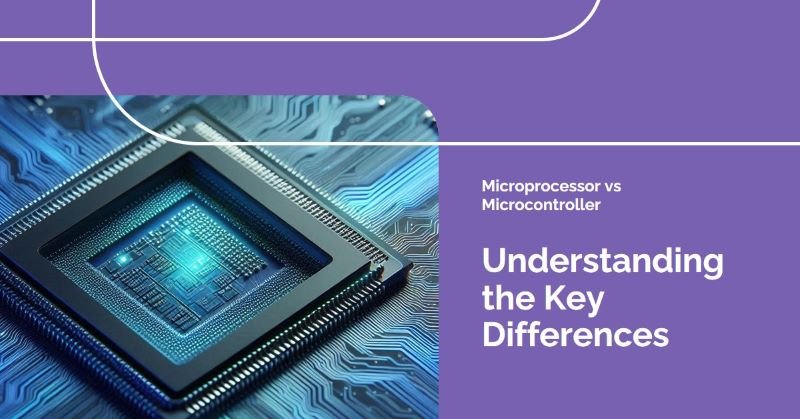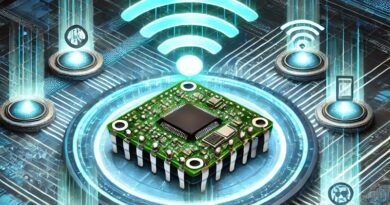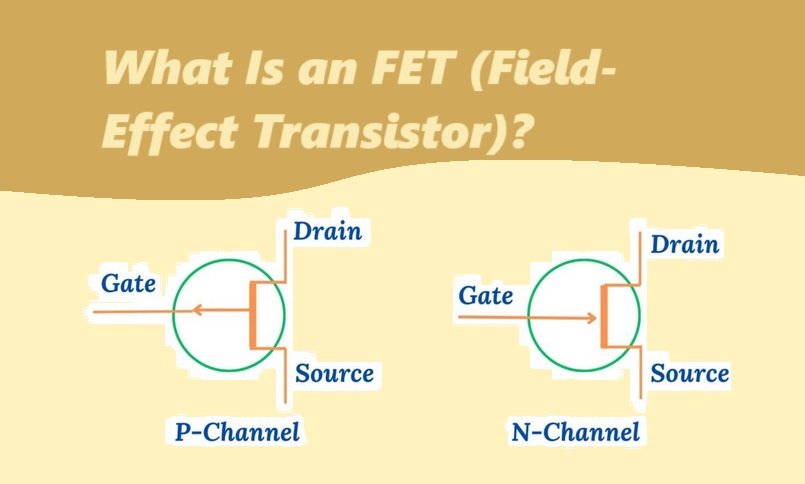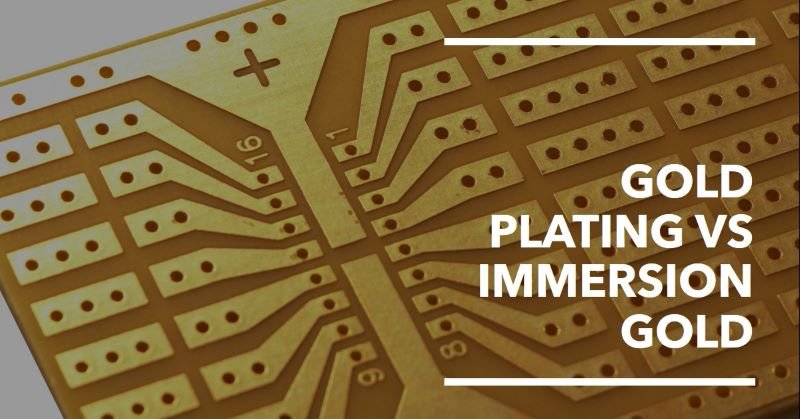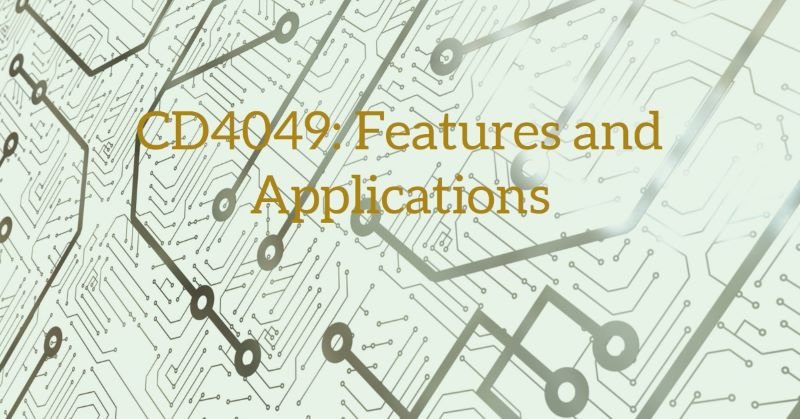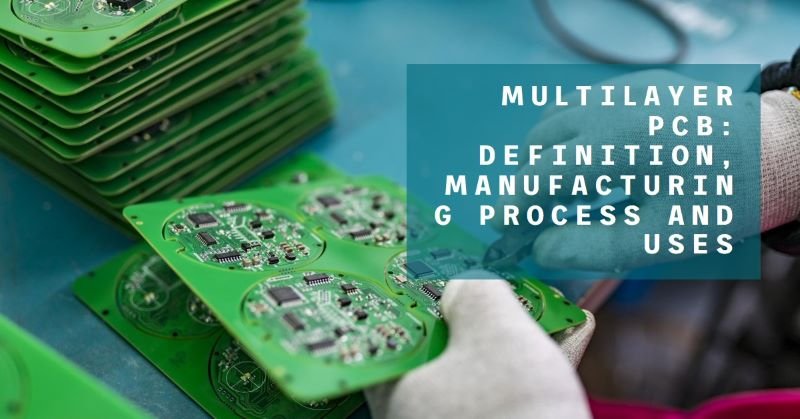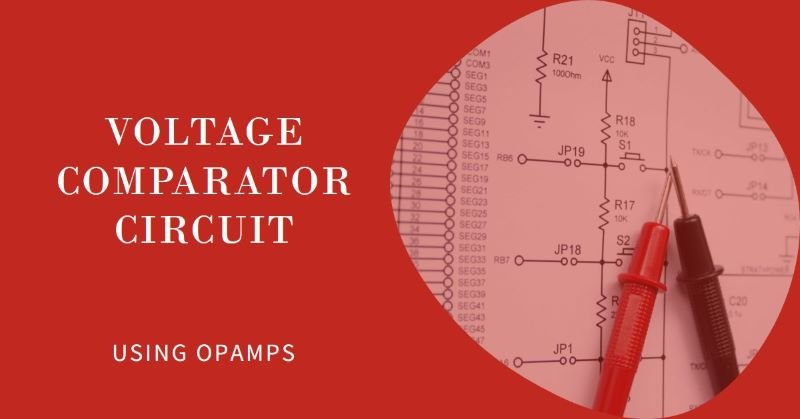Difference between Microprocessor and Microcontroller
Embedded systems play a crucial role in modern technology, powering countless devices we use daily, from smartphones and home appliances to industrial machines and medical devices. These systems are designed to perform specific tasks with high efficiency and reliability, often relying on either a microprocessor or a microcontroller as the core processing unit.
A microprocessor is a general-purpose processing unit that executes complex tasks by handling data and instructions through external components like memory and input/output (I/O) interfaces. It is primarily designed for computing-intensive applications such as personal computers and servers.
On the other hand, a microcontroller is a compact, integrated circuit designed to control specific tasks within an embedded system. It combines a processor, memory, and peripherals (I/O ports, timers, etc.) all on one chip, making it suitable for dedicated tasks such as controlling appliances, sensors, or automotive systems.
Both microprocessors and microcontrollers are essential to modern electronics and computing. Microprocessors power high-performance devices, while microcontrollers are the backbone of embedded systems that require precise, low-power control.
What is a Microprocessor?
A microprocessor is a general-purpose processing unit designed to execute complex instructions by performing arithmetic, logical, control, and input/output operations. It is often the central unit in computing systems, where it processes vast amounts of data and controls the operation of peripheral devices.
History and Evolution: The development of microprocessors began in the early 1970s with the introduction of Intel’s 4004, the first commercially available microprocessor. Over the decades, microprocessors evolved significantly, transitioning from simple 4-bit processors to today’s multi-core, 64-bit processors capable of handling advanced tasks such as artificial intelligence, real-time data processing, and multimedia rendering.
Key Components:
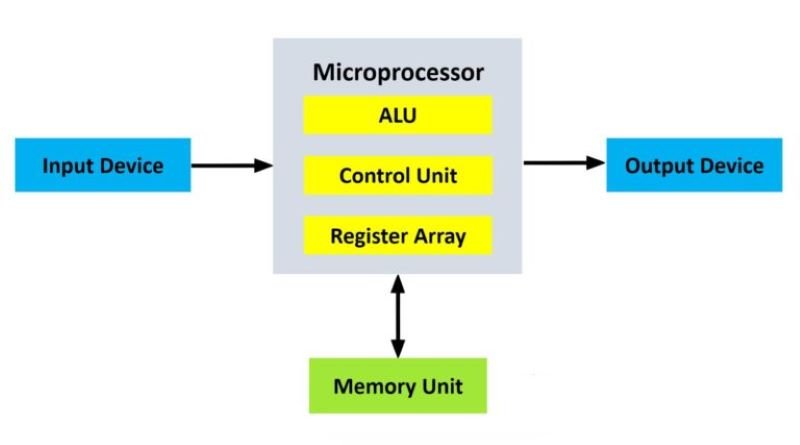
- Arithmetic Logic Unit (ALU): Responsible for performing mathematical and logical operations.
- Control Unit: Directs the operation of the processor by interpreting instructions and managing data flow between the ALU, registers, and memory.
- Registers: Small storage locations within the CPU that hold data temporarily for quick access during processing.
Applications: Microprocessors are widely used in computers, laptops, smartphones, servers, and other general-purpose computing devices. They are also essential in high-performance applications such as gaming consoles, data centers, and workstations.
What is a Microcontroller?
A microcontroller is a small, integrated circuit designed for controlling specific tasks in embedded systems. Unlike microprocessors, microcontrollers come with built-in memory, I/O ports, and other peripherals, making them ideal for dedicated applications where power efficiency and compactness are essential.
History and Evolution: The first microcontroller, the Intel 8048, was developed in the mid-1970s. Since then, microcontrollers have become widely adopted in consumer electronics, automotive systems, industrial machinery, and more. They have evolved from basic 8-bit architectures to more advanced 16-bit and 32-bit designs, with increased processing power and integrated peripherals.
Key Components:
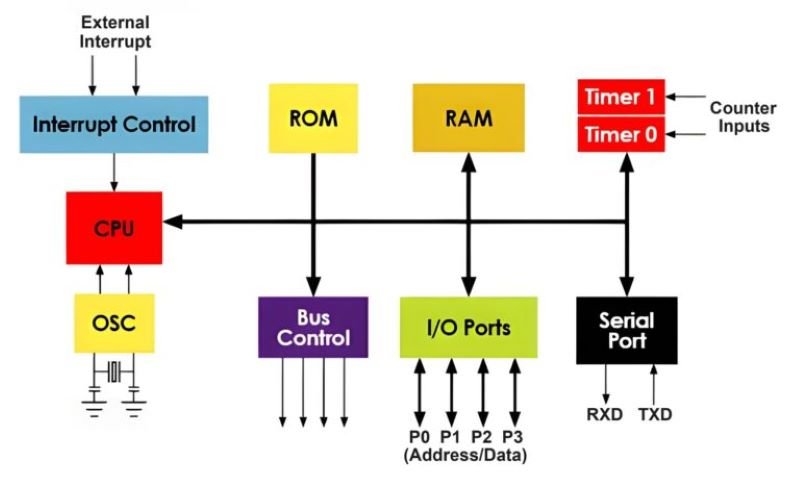
- Central Processing Unit (CPU): The core that processes instructions and controls the microcontroller’s operations.
- Memory: Typically includes both flash memory for program storage and RAM for data processing.
- I/O Ports: Allow communication with external devices such as sensors, displays, and actuators.
- Timers: Used for precise control over timing functions, such as generating clock signals or measuring intervals.
Applications: Microcontrollers are extensively used in embedded systems, including home appliances, automotive control systems, robotics, IoT devices, and medical equipment. Their low power consumption, integrated design, and cost-effectiveness make them ideal for systems that require dedicated and continuous control.
Key Differences Between Microprocessor and Microcontroller
Architecture
- Microprocessor: Microprocessors are designed primarily for high-performance processing. Their architecture focuses on speed and computational power, relying heavily on external peripherals, such as memory, I/O controllers, and timers, to perform tasks.
- Microcontroller: In contrast, microcontrollers have an integrated architecture where the CPU, memory, and I/O peripherals are all contained within a single chip. This makes them ideal for handling specific tasks efficiently without needing additional external components.
Memory
- Microprocessor: Microprocessors depend on external memory (RAM, ROM, etc.) to store and process data. This allows for flexibility in handling large amounts of data and complex instructions, but it also requires more hardware support.
- Microcontroller: Microcontrollers come with built-in memory (both RAM for data and flash memory for program storage), reducing the need for external memory. This compact design is advantageous for embedded systems that require limited but efficient memory usage.
Processing Power
- Microprocessor: Microprocessors are designed for tasks that require high processing power, such as running operating systems, executing complex algorithms, and handling large amounts of data. They excel at multitasking and computation-heavy operations.
- Microcontroller: Microcontrollers are optimized for specific applications, where processing power is secondary to reliability, efficiency, and real-time control. They are built to perform a defined set of tasks repetitively, often in real-time.
Power Consumption
- Microprocessor: Microprocessors generally consume more power due to their higher processing capabilities and reliance on external components, making them less suitable for battery-powered or low-power applications.
- Microcontroller: Microcontrollers are designed with power efficiency in mind, consuming much less power compared to microprocessors. This makes them ideal for battery-operated devices and embedded systems where energy conservation is critical.
Cost
- Microprocessor: Due to their higher processing power and the need for additional external components (memory, I/O devices), microprocessors tend to be more expensive.
- Microcontroller: Microcontrollers are cost-effective because they integrate multiple components into one chip, reducing the need for additional external hardware. This makes them affordable for mass-produced, dedicated-use applications.
Usage
- Microprocessor: Microprocessors are commonly used in devices requiring significant computing power, such as personal computers, servers, smartphones, and tablets.
- Microcontroller: Microcontrollers are utilized in embedded systems that require precise control, such as home appliances, automotive systems, IoT devices, industrial machinery, and robotics.
Advantages and Disadvantages
Microprocessor
- Advantages:
- Higher performance and processing capabilities.
- Flexibility in handling complex tasks and running multiple applications simultaneously.
- Suitable for general-purpose computing and multitasking.
- Disadvantages:
- Higher cost due to the need for external peripherals.
- Increased power consumption, making them less ideal for low-power applications.
- Requires more space and supporting hardware, leading to larger designs.
Microcontroller
- Advantages:
- Lower cost due to integrated peripherals and memory.
- Efficient power consumption, ideal for battery-operated devices.
- Compact design, making them suitable for space-constrained applications.
- Easy to use in specific, dedicated applications.
- Disadvantages:
- Limited processing power compared to microprocessors.
- Less flexible in terms of multitasking or handling complex computations.
- Restricted memory and storage options.
Applications
Microprocessor Applications
- Computers and Laptops: Used in devices requiring high computational power and multitasking.
- Servers and Data Centers: Powering complex operations that require large-scale data processing.
- Smartphones and Tablets: Running advanced operating systems and handling multitasking efficiently.
- Gaming Consoles and Workstations: Supporting high-performance applications like gaming, 3D modeling, and video editing.
Microcontroller Applications
- Home Appliances: Controlling everyday devices like washing machines, microwaves, and refrigerators.
- Automotive Systems: Managing embedded systems in vehicles such as engine control units, airbags, and ABS systems.
- IoT Devices: Powering smart devices like sensors, actuators, and wearable technology.
- Robotics: Providing precise control in robotic arms, drones, and automation systems.
- Industrial Machines: Embedded in control systems that monitor and automate machinery processes.
Conclusion
In conclusion, microprocessors and microcontrollers serve distinct purposes in the world of electronics. Microprocessors offer higher processing power and are used in devices that require multitasking and intensive computations, such as computers, smartphones, and servers. On the other hand, microcontrollers are cost-effective, low-power devices optimized for specific control tasks in embedded systems like home appliances, automotive systems, and IoT devices. The choice between a microprocessor and a microcontroller ultimately depends on the application’s requirements for processing power, power consumption, cost, and functionality.
